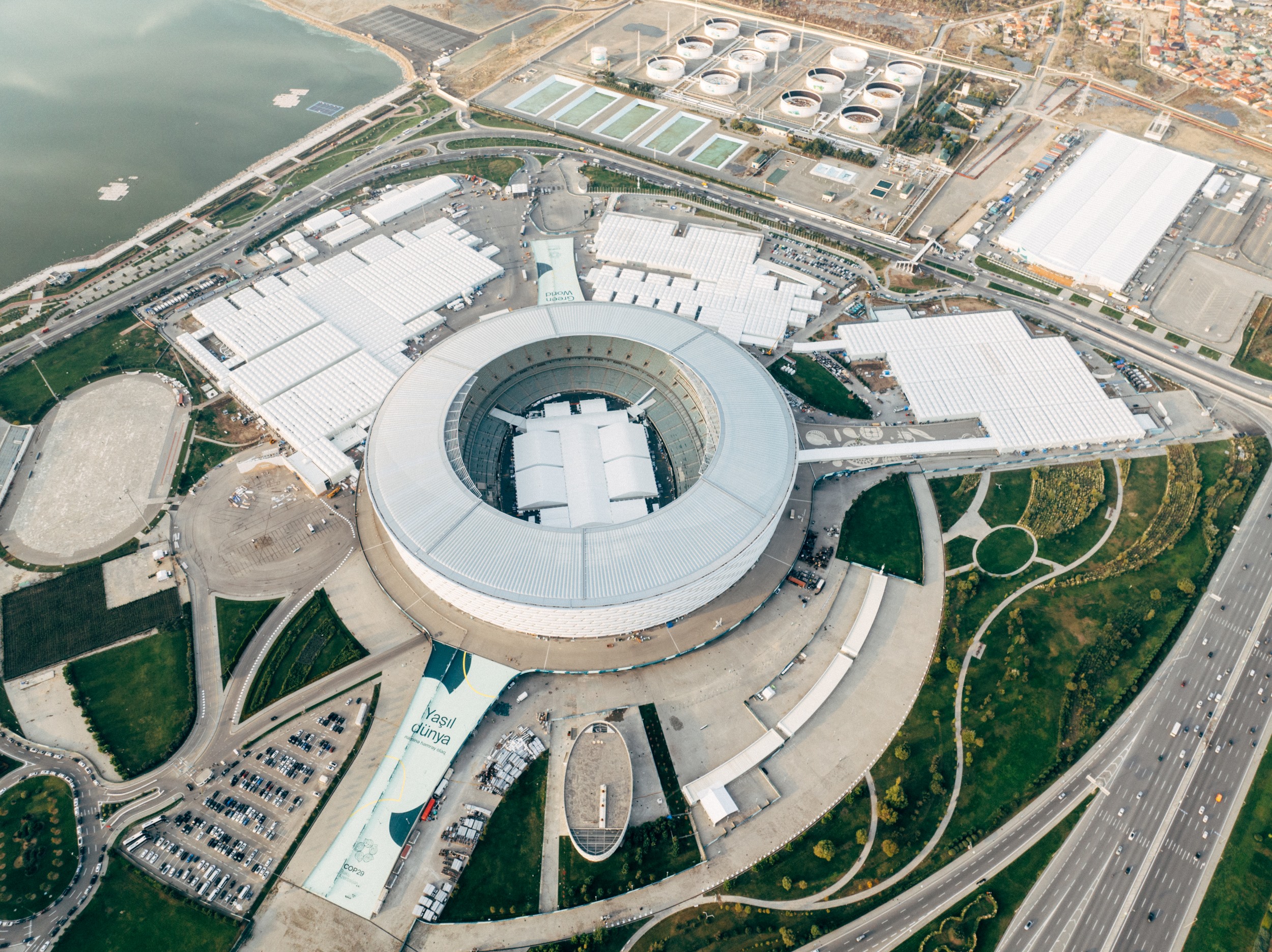The IAEA to showcase ideas in some 40 events at COP29, in Baku, Azerbaijan, from November 11 to 22, 2024.
BAKU, Azerbaijan, Nov 9 (The CONNECT) – The scale of climate change driven disasters is growing. This year, over a third of Pakistan was submerged in flooding from rainfall and glacier melt, displacing and impacting the lives of hundreds of millions of people, said IAEA ahead of COP 29 to be held here from next Monday.
As the world grapples with the escalating impacts of climate change, IAEA Director General Rafael Mariano Grossi will join global leaders and stakeholders at the Conference of the Parties to the United Nations Framework Convention on Climate Change (UNFCCC), or COP29, to highlight the vast potential of nuclear solutions for climate change mitigation, adaptation and monitoring.
“At COP28, the world agreed nuclear power must be part of the transition to net zero,” said IAEA Director General Rafael Mariano Grossi in the runup to COP29. “We know investment in nuclear power can lower grid costs and speed up the deployment of intermittent clean-energy sources like wind and solar. As the world moves from consensus to construction, the IAEA supports newcomer countries in establishing safe, secure, safeguarded and sustainable nuclear power programmes.”
Wildfires burn forests in Europe, droughts destroy crops in southern Africa and storms batter the Caribbean. Climate change affect us all, but the most vulnerable communities are shouldering the heaviest burden.
While the global situation looks grim, hope lies in the ingenuity of human solutions to address a human-caused problem. “Our climate crisis is driven by the burning of fossil fuels, releasing greenhouse gases into our atmosphere.” IAEA said.
While coal, oil and natural gas have been critical to societal and technological development over the past 200 years, the heat-trapping properties of their emissions are warming our planet and affecting our weather systems, our ocean and the health of our planet.
“Scientists and decision makers rely on IAEA isotopic data to measure climate change,” said IAEA. Our reference materials for greenhouse gases are the global standard and are used to quantify, trace and identify emission sources. Together with the World Meteorological Organization we are working to expand the use of isotope measurements for greenhouse gases across Africa, Asia and the Pacific, Europe, and Latin America and the Caribbean.
In mitigation, nuclear energy has played a central role. Over the past five decades it has avoided the release of more than 70 gigatons of carbon dioxide. Globally, more than 400 reactors still supply the world with about a quarter of its low-carbon energy and today around 30 countries are considering or embarking on new nuclear power programmes.

Nuclear science offers a suite of climate adaption tools and solutions and we share examples from Africa, Asia and Latin America.
Nuclear science and technology have for decades been crucial parts of the climate change solution, both in mitigation and adaptation. It is clear the world needs more low-carbon energy and more opportunities to adapt. That means the world needs more nuclear.
At COP29, the IAEA will showcase nuclear solutions for climate action in some 40 events at COP29.
The Agency’s Atoms4Climate pavilion will feature an exhibit on nuclear applications, with IAEA experts ready to answer questions about how nuclear energy contributes to net-zero emissions and how nuclear science can address climate-related challenges to food security, water resources and ocean health.
COP29 will build on the global consensus that emerged at COP28 in Dubai, where the Global Stocktake marked a historic turning point with its call for accelerating the deployment of nuclear energy, along with other low-emission technologies, to help achieve deep and rapid decarbonization.
COP29 also follows on the first-ever Nuclear Energy Summit, hosted in Brussels by the IAEA and the Government of Belgium in March 2024, where leaders from more than 30 countries reaffirmed their commitment to nuclear energy as a way to reduce carbon emissions and meet development goals.
A Call for Investment
A central theme of COP29 will be the pressing need for increased climate finance. A UN report released on 28 October indicates that current policies and investments fall far short of what is needed to keep global temperature rise below 1.5°C in this century, the target of the Paris Agreement.
On November 13, Grossi will join high-level representatives from the COP29 Presidency, the International Energy Agency (IEA), the United Nations Economic Commission for Europe (UNECE), multilateral development banks and the nuclear industry in an event hosted by the COP29 Presidency on “Financing Low Carbon Technology, including Nuclear Energy” to discuss the crucial role of governments, multilateral development banks and the private sector in scaling up nuclear energy.
Small Modular Reactors: A Flexible Solution
Mr Grossi will co-host a high-level event with the Government of the United States of America on small modular reactors (SMRs), which offer flexible, cost-effective options for powering small energy grids, making them suitable for developing countries, as well as energy-intensive industries, data centres and even commercial ships.
The IAEA will highlight innovative research and technologies incorporating nuclear techniques that enhance food security, preserve water resources and monitor ocean ecosystems while addressing climate change through mitigating actions.




